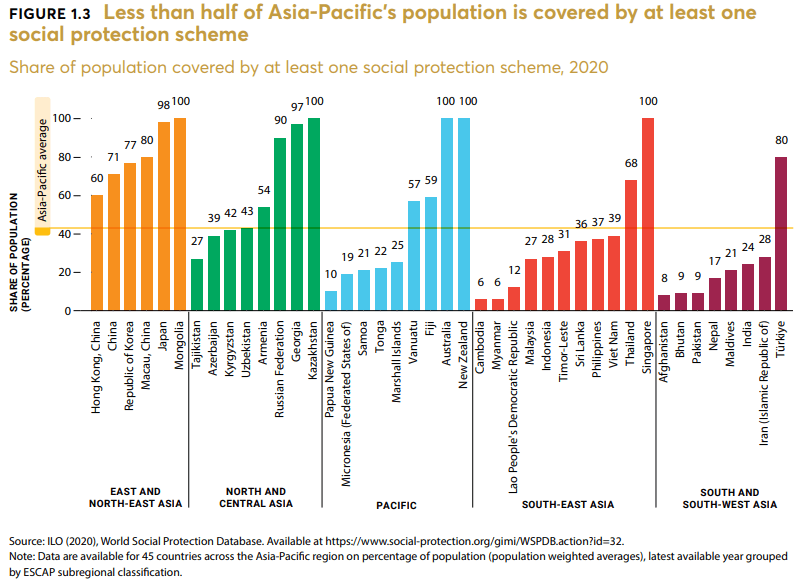A report published by the Economic and Social Commission of Asia-Pacific (ESCAP) this week revealed that the workers in Asia are not “productive, protected, and healthy” enough.
The report titled “The workforce we need. Social prospects for Asia and the Pacific ” showed that 68 percent of workers in the continent or 1.4 people are working in the informal sector.
It said that the growth of GDP in Asia in the last 15 years has not been matched by an adequate increase in employment, so much so that in some countries it has even decreased.
Most of the “jobless growth” occurred in Asia South, where millions of workers are forced to accept informal jobs characterized by lack of contracts, insufficient wages, irregular hours. and dangerous working conditions.
Informal employment has increased in 14 of the 19 countries in the region for which data are available. Similarly, between 2010 and 2021, 20 million precarious jobs were created and in some countries (Afghanistan, Laos, North Korea, Nepal, Papua New Guinea) these grew even faster than total employment.
Today half of Asian workers are deprived of any kind of social protection and therefore “highly vulnerable to systemic shocks,” the report reads.
Only in Mongolia, Kazakhstan, Australia, New Zealand and Singapore do 100% of the population enjoy at least one social coverage plan, followed by Japan with 98% and Georgia with 97%.
The vulnerability of the workforce undermines its productivity: the inaccessibility to health care increases absenteeism due to illness, increasing poverty and decreasing the productive force, which in Asia has fallen below the global average.
The health status of workers is directly related to labor productivity and the development of a nation, but workers in low- and middle-income countries can expect to die 13 years earlier than those in high-income countries. infant mortality rates in Asia are 10 times higher. Healthcare costs are so high that millions of families are forced into poverty, a percentage that was 16% in 2017, the highest figure worldwide.
A further consequence of the increase in informal and precarious work is that half of Asian workers (3.2 billion individuals, more than half of the global workforce) are working poors or nearly so, earning less than $ 5.50 a day. At least 158 million people earn 3.2 dollars a day (moderate poverty), while 85 million people live in conditions of extreme poverty, that is, on less than 1.9 dollars a day. The most significant increases were seen in Papua New Guinea, the Solomon Islands, East Timor, Cambodia, Laos and India.
Even before the pandemic and the war in Ukraine, more than half of the continent’s workers did not have regular income for the entire 12 months of the year, more than a quarter did not have enough food and a third did not have health protection to continue working. All of this translates into a loss of physical and human capital and additional workforce.
According to the Escap, there are three future trends that could further undermine the conditions of poor and precarious workers by increasing inequalities even more: climate change, digitalisation and an aging population.
In the absence of adaptation policies, natural disasters mainly affect small businesses. If current trends continue, escap projections put a third of Asian workers at high risk, as eight of the 10 most vulnerable countries in the world to climate change are in Asia.
Likewise, digitization risks leaving behind a large portion of the population: in Asia-Pacific less than two-thirds of the population has access to the Internet, compared to 90% of the average for developed countries.
The over 65s, on the other hand, have gone from 171 million in 1990 to 445 million in 2021 and are expected to increase again by 2050, exceeding one billion. As a result, the median age of the entire population and workforce will rise, from 32.5 in 2020 to 40.3 in 2050. In the near future, a small workforce will have to support an ever-increasing number of retirees.
The Escap stresses that “it will therefore become increasingly important to expand the range of decent work opportunities for older workers and support them to remain productive and healthy through a health system that meets the needs of older people.”







